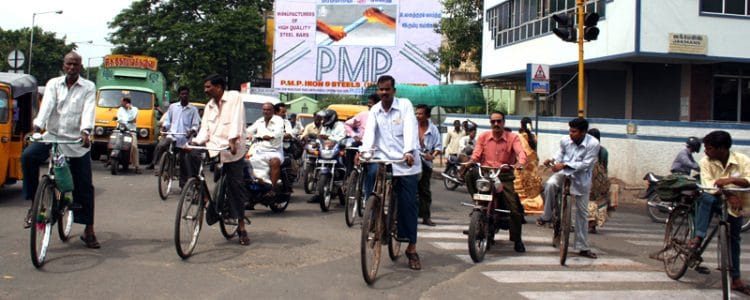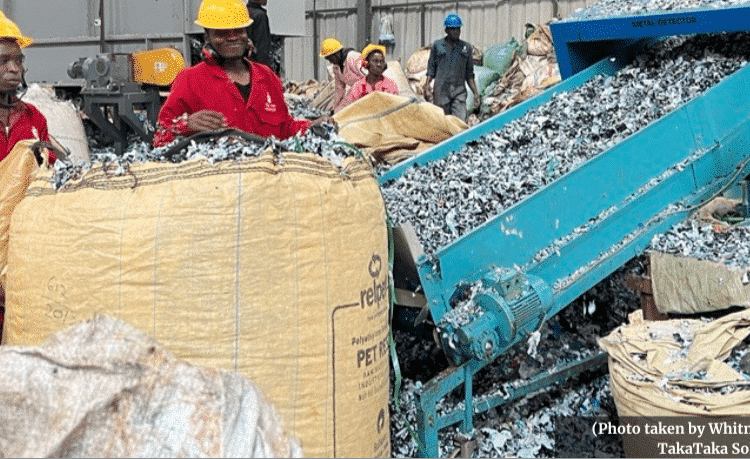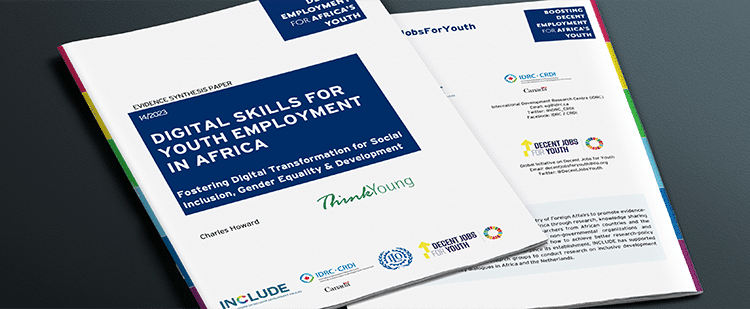
Social policies in China and India have the potential to make growth more inclusive, but there are clear limitations to what they can achieve. What are the lessons for other developing countries?
There has been much debate about whether economic growth necessarily leads to increased inequalities. But there is little doubt that the rapid growth of China’s economy has been very unequal. In India not all groups and regions have benefited equally from the country’s economic transformation either, even though the data are less clear. In both countries, there is much official and public concern about these growing inequalities and the policies put in place. So are these policies, and social policy in particular, having the intended effect?
Of course, the growing inequalities vary, and are addressed differently in each context. China had a relatively equal income distribution until the start of economic reform in 1978, and Mao’s policies had uprooted many of the old social structures. With the reforms, and particularly those focused on export promotion, inequalities grew rapidly. This was seen as an inevitable part of China’s development path, but the acceptability of growing inequalities was also contested. Protests within the Party and among the public have grown since the 1990s, leading the government to proclaim the need for a ‘harmonious society’ in 2005.
These concerns for inequalities were maintained as part of China’s response to the financial crisis of 2007-08. In fact, addressing inequalities has increasingly been seen as part of a necessary shift away from an economic model relying on export towards one promoting an internal market. This emphasis has continued under President Xi Jinping, with a deepening of institutional reform.
India’s economic reforms have been less dramatic, and its patterns of inequalities have also changed less than those of China. Old social inequalities, the deprivation of lower castes and adivasis, and disparities in women’s opportunities have persisted. Economic reforms have not been accompanied by the fast rise in income inequalities witnessed in China, but levels of wealth have visibly diverged. In India this has contributed to an emphasis on the need to make growth more inclusive, particularly since the 2004 election. In practice, this has meant putting a number of measures in place, including the National Rural Employment Guarantee Act (NREGA) and a food security bill, which focuses on safety nets rather than on transforming economic structures. Under the new government since 2014, important institutional changes have been introduced early on, with signs that NREGA in particular will be continued, but with a stronger focus on enhancing the productivity of the rural economy.
Have these efforts to make growth more inclusive been successful? To start answering this question, it is important to emphasize how the different political systems in emerging economies have led to very different approaches. While India’s democracy brings public concerns to the top of the agenda, leading to flagship initiatives like NREGA, the political dynamics can also contribute to a patchwork of often uncoordinated initiatives, and to political expediency predominating over policy effectiveness. By contrast, China’s top-down system may and often does limit the extent to which public concerns are addressed in policy debates, but it has also shown impressive adaptability. The health reform shows that, after initial resistance to enhanced public policies to address growing public health concerns, once recognized as a priority by highest authorities, an impressive process was initiated that designed, piloted and rolled out a new health insurance scheme. It does not address all inequalities and public health concerns, but is generally acknowledged to be moving in the right direction.
A second major difference is the orientation of social policy. India’s social policy demonstrates a strong ‘welfarist’ orientation, mainly seen as addressing the negative consequences of markets and economic reforms. The country’s public social spending has remained low – 3.3% of GDP on education, 1.2% on health, and 1.7% on social protection in 20111 – although it is gradually increasing. Moreover, social programmes have a strong focus on targeting, including the large array of social groups deemed eligible for affirmative action. The new government’s emphasis on productivity is an attempt to change this, but this may require significant changes across the whole spectrum of policy implementation.
In China, social spending has also remained low: 2.9% of GDP on health and 5.4% on social protection in 2011,1 but the orientation of the programmes differs remarkably and shows characteristics of Asian productivism. The role of social policy is seen as not only dealing with the negative consequences of markets, but also actively supporting the development of markets. Eligibility for benefits is strongly monitored, with the help of community organizations. Social policies tend to focus on employability, for example by training migrants, whereas in India reducing migration is a common goal. The 2008-2009 Chinese incentive package after the financial crisis did not change these patterns, maintaining a strong emphasis on ‘economic’ investments.
Social policies in both countries have the potential to make growth more inclusive. Even if they are not visibly contributing to a decline in inequality, as in Latin America, without these policies growth patterns would likely be even more unequal or public health concerns even larger. Indian policies continue to focus more on redistributive justice, whereas in China preparation for a market economy is usually seen as more important.
In both cases, however, there are clear limitations to what the expansion of social policies can achieve. Other factors are important in achieving the required change of direction. For example, in India the informal sector continues to grow, implying that an ever-larger number of workers remain employed in low-productivity enterprises without social protection. Women’s participation in the labour force has actually fallen, and the human capital of lower castes and adivasis still lags far behind, limiting opportunities and economic growth. In the case of India, economic opportunities are much less of a public and policy priority than ‘flagship’ social protection schemes. These social schemes are important, but more needs to be done to transform economic opportunities for marginalized groups.
In China, regional disparities remain large, most migrants continue to lack access to social services in cities, and public finance continues to be regressive. The government now recognizes that a number of interrelated governance reforms are required, and in July 2014 it announced an overhaul of the household registration system (hukou). It is clear that these reforms will be slow, and vested interests, for example between rural and urban areas, or export-oriented and inward-looking areas, will continue to hold transformation back. Gender equality also may have experienced a setback, as the simultaneous expansion of female employment and decline of pre-1978 services has enhanced pressures on women and earning gaps have increased.
What are the lessons for other developing countries? I can think of three. First, social policy responses, and the extent to which they can have an impact on inclusion, are closely interlinked with countries’ broader policies and national institutions. Second, levels of GDP and of state resources are of course important to the capability of the state to impact inclusion. The lessons of the ‘productivist’ orientation of China and other Asian states are worth a close look, as social policies can also be economic investment. Finally, certainly China’s experience seems to suggest how important it is to monitor the growth of inequalities, as addressing these at early stages may be beneficial for both inclusion and growth.




